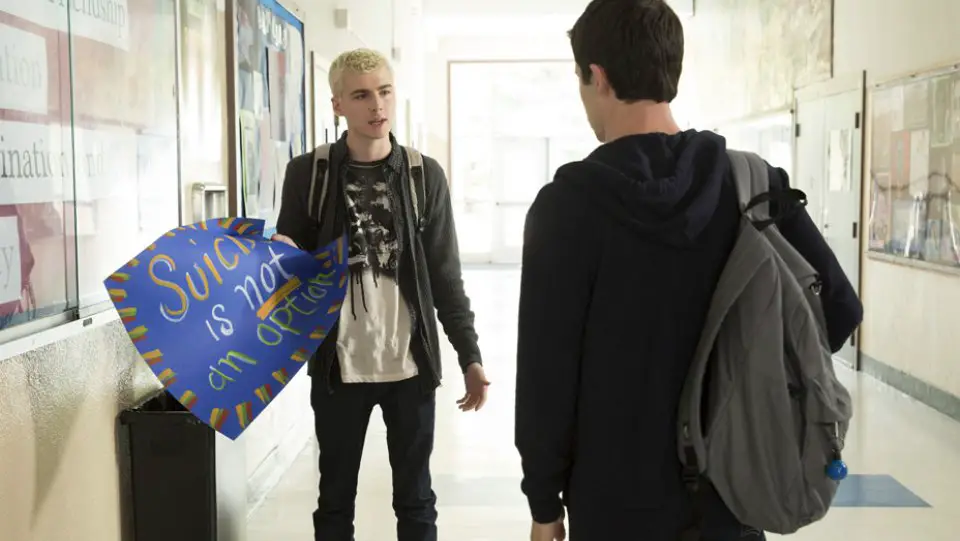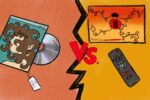If you’ve been anywhere near the internet recently, you’ve probably seen some mention of the new Netflix original series “13 Reasons Why,” based off the bestselling young-adult novel by Jay Asher. The series is set in the aftermath of a suicide committed by high schooler Hannah Baker. She leaves thirteen tapes behind, each corresponding to a different person whom she attributes her suicide to. The show follows Clay Jenson as he listens to the tapes and tries to piece together Hannah’s story.
For those who have yet to tune in, here’s your obligatory spoiler alert if you choose to keep reading.
The series became an instant binge-watch sensation, garnering much praise and an equal amount of criticism. While many laud the show’s provocative approach to sensitive topics, some feel that the graphic depictions of rape and suicide were too much for a young-adult series, particularly one that could be triggering for teens experiencing similar feelings of suicide.
While these criticisms are valid, “13 Reasons Why” and its refusal to censor sensitive subject matter is important for another group of people who are watching: potential abusers.
There have been young-adult book-to-screen adaptations that have attempted to tackle these issues before. “It’s Kind of a Funny Story” begins with a teenager checking himself into a hospital because he’s having suicidal thoughts, and it includes other characters with varying mental illnesses, including a teen who cuts herself.
“The Perks of Being a Wallflower,” another teen cult classic, tackles the subjects of sexual abuse and post traumatic stress disorder (PTSD).
Though these movies were fantastic and made a huge impact on audiences, they also shied away from some of the harsh realities. Those stories were written to appeal to teenagers who were looking for a connection, a validation of their emotions.
While the same can be said for “13 Reasons Why,” the story’s theme can be extended much further. The purpose of the series is to make viewers aware of the consequences of their actions and to help stop tragedies, like teen suicide, from the source, so to speak. It targets not only the Hannah Bakers, but the Alex Standalls and the Justin Foleys of the world as well.

The difference between this show and other teen dramas, though, is established from the very beginning.
“Hey, it’s Hannah, Hannah Baker. Don’t adjust your…whatever device you’re hearing this on. It’s me, live and in stereo.”
The audience hears this in the opening scene, establishing up front that Hannah has killed herself. There is no way that the show could follow its predecessors by having some happy friends and a love interest somehow curing the main character of their mental illness and convincing them that life is worth living. No matter what the characters do from the opening scene, Hannah Baker will still be dead. So then, what’s the point?
The point is to learn from your mistakes. But, in order to do that, you have to be exposed to your mistakes. Each of the thirteen tapes tells a story of a person who made a bad decision that affected Hannah’s mental health (except Bryce, who was aware of the pain he was causing, so fuck Bryce).
So many people misunderstand mental illness. They think that suicide is a selfish decision because they don’t understand the way someone’s mind can consume them, and they don’t consider how a person can be affected by what some may consider to be trivial moments.
Something like Alex adding Hannah’s name to the “Hot or Not List,” branding her as “the best ass,” may seem like a silly event to get upset over, just teenagers being teenagers (boys will be boys?), but that one small moment put a target on her literal backside.
That one small moment changed the way others perceived her and made her feel that much more out of control, like she was no longer a person, but just a sum of the body parts that others were sexualizing.
If the creators of the show had any hope that their audience would change, they had to show the true weight of a person’s actions. That means allowing graphic depictions of rape and suicide.
There were several times during the course of the show when I physically could not bring myself to look at my screen. The way that all hope left Hannah’s face while she was being raped made me so emotional, I had to pause the show, and I watched through the cracks of my fingers while Hannah slit her wrists in the bathtub.
https://youtu.be/RcJ03_VimX0
Those images were powerful because they needed to be. The creators put in front of their viewers, live and in stereo, the consequences of their actions and forced them to watch. If you were uncomfortable, good. You were supposed to be.
No event on Hannah’s tape (except for maybe her rape) was treated with more severity than another. Each action was presented as just as harmful as the next, and that is important in illustrating how any action can be the one that pushes someone over the edge.
You don’t know the way that your words can hurt someone.
Not only that, but those who made it onto the tapes were also given backgrounds and an explanation of the events that led them to the decisions they made, further illustrating the domino effect of circumstances that affect a person’s life.
Even Mr. Porter, the school counselor, wasn’t exempt from taking responsibility. So often adults want to push the blame onto children, choosing not to believe that their own actions could still have an effect, if not more of an effect, on an impressionable child.
Even adults who chose to watch the show were forced to look at themselves in the mirror and evaluate what they’ve done. The only person who, thankfully, wasn’t given an opportunity for sympathy was Bryce. The show chose to only show him as a rapist, forcing viewers to have no excuses for his behavior.
“13 Reasons Why” is difficult to watch, and it may not be the best choice in programming for those who have the potential to be triggered; however, the way it forces audience to evaluate themselves makes the series immensely valuable.

















